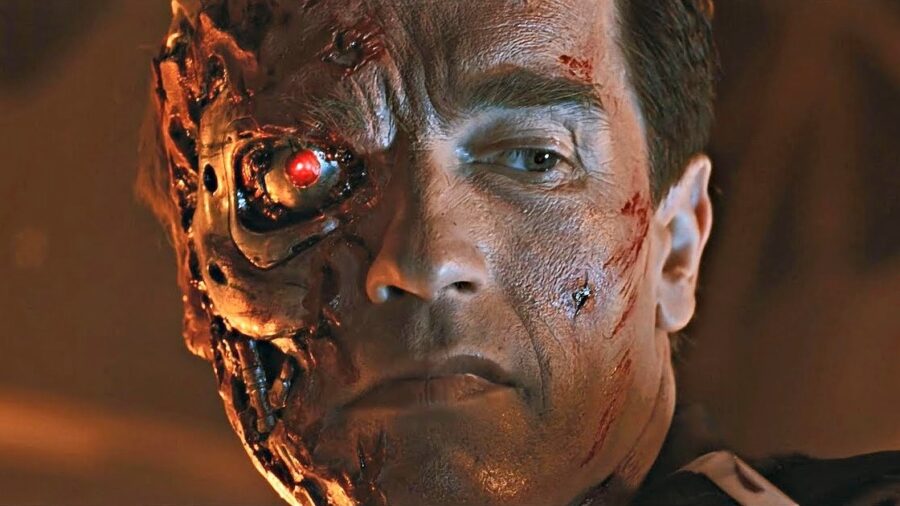Scientists Are Covering Killer Robots With Living Fungus, Just Like Terminator

In a nod to science fiction, researchers have developed a living skin made of fungus for potential killer robots. The creation is inspired by 1984’s The Terminator, in which the titular character is covered with fake skin to hide the fact that he’s a robot. The experiment aims to develop a coating that serves as a biodegradable and multifunctional sensor for electronics.
Scientists are using a fungus called Ganoderma sessile to craft versatile robot skins.
“There’s this scene in The Terminator in which they implant the skin on the [killer] robot,” Antoni Gandia at the Polytechnic University of Valencia in Spain, co-author of a recent paper, which is currently under review, said via The Byte. “The skin is external to him, yet it reports data to the robot and auto-repairs,” he added. “We wanted to show that we can already do things like that.”
Traditional electronic sensors, typically crafted from silicone, often pose manufacturing challenges and detection limitations. To harness nature’s potential to create sustainable solutions, the researchers used Ganoderma sessile, a versatile fungus capable of thriving in diverse conditions, as the basis for their living skin/killer robot experiment.
They coated a seven-inch killer robot model in agar to encourage fungal growth, providing the ideal environment for the fungus to flourish. After five days inside an incubator, the fungus enveloped the figurine entirely. This mycelium-based skin displayed sensitivity to light and touch, echoing the intricate capabilities depicted in The Terminator movie.
In their research paper, Gandia and study co-author Andrew Adamatzky from the University of the West of England dubbed their creation a “living, self-regenerating, and reactive Ganoderma sessile mycelium.” It effectively transformed the model killer robot into a “bio-cybernetic entity,” demonstrating the potential of living materials in technology.
“There’s this scene in The Terminator in which they implant the skin on the [killer] robot. The skin is external to him, yet it reports data to the robot and auto-repairs. We wanted to show that we can already do things like that.”
Antoni Gandia, Polytechnic University of Valencia in Spain
While this project may seem like a quirky tribute to a beloved sci-fi classic, it holds substantial scientific promise. At its best, it serves as a proof of concept, illustrating living materials’ extraordinary adaptability and functionality. At its worst, it is an intriguing experiment that sparks curiosity about how killer robots could hide in plain sight.
Gandia and Adamatzky envision broader applications for their research beyond miniature killer robots. They believe living skins could one day envelop buildings to regulate their temperature, offering a sustainable alternative to conventional climate control systems. “As we continue to push the boundaries of what is achievable with mycelium, we step closer to a future where bio-cybernetic systems are a part of our everyday lives,” they wrote.

The scene in The Terminator, to which Gandia refers, is a pivotal moment in the movie. It occurs when the Terminator, portrayed by Arnold Schwarzenegger, reveals its true nature as a killer robot sent from the future. To blend in with humans and remain undetected, the Terminator has a layer of living tissue, often called “skin,” grafted onto its metallic frame.
This skin is organic and almost indistinguishable from human flesh, allowing the Terminator to mimic a human appearance. The purpose of this organic covering is not only to conceal the killer robot’s components but also to make it appear human, enabling it to infiltrate society and carry out its mission to eliminate a target.
These living skins could one day envelop buildings to regulate their temperature, offering a sustainable alternative to conventional climate control systems.
The process of implanting this skin is visually depicted in the film as a robotic arm meticulously attaching the synthetic tissue to the Terminator’s metal endoskeleton. As the skin is infused, viewers witness the intricate and highly detailed special effects that make the transition from killer robot to man seamless.
The concept of the Terminator’s synthetic skin is a central plot point and a defining element of the film’s visual and narrative impact. It underscores technology’s potential to mimic and integrate with humanity.










